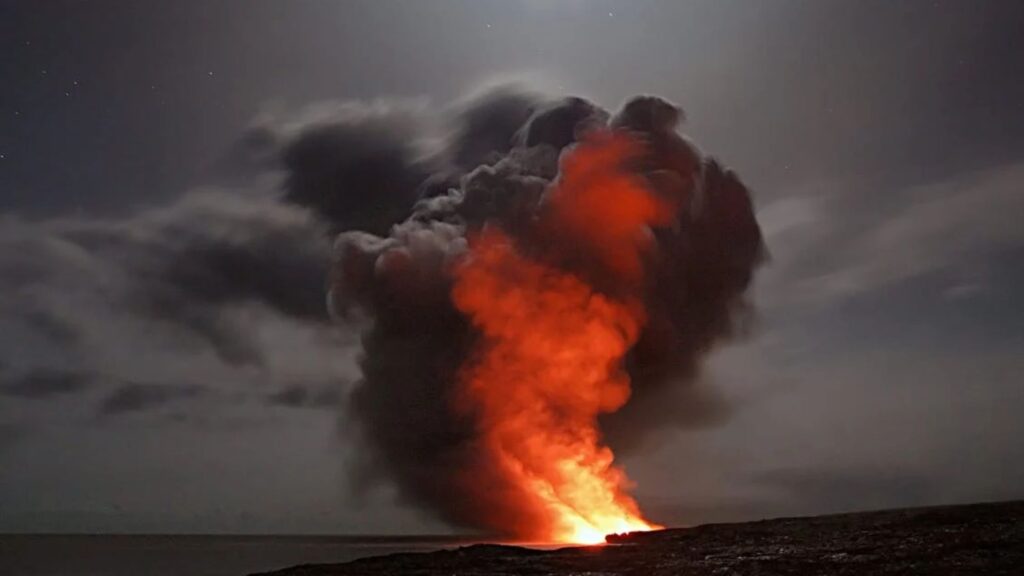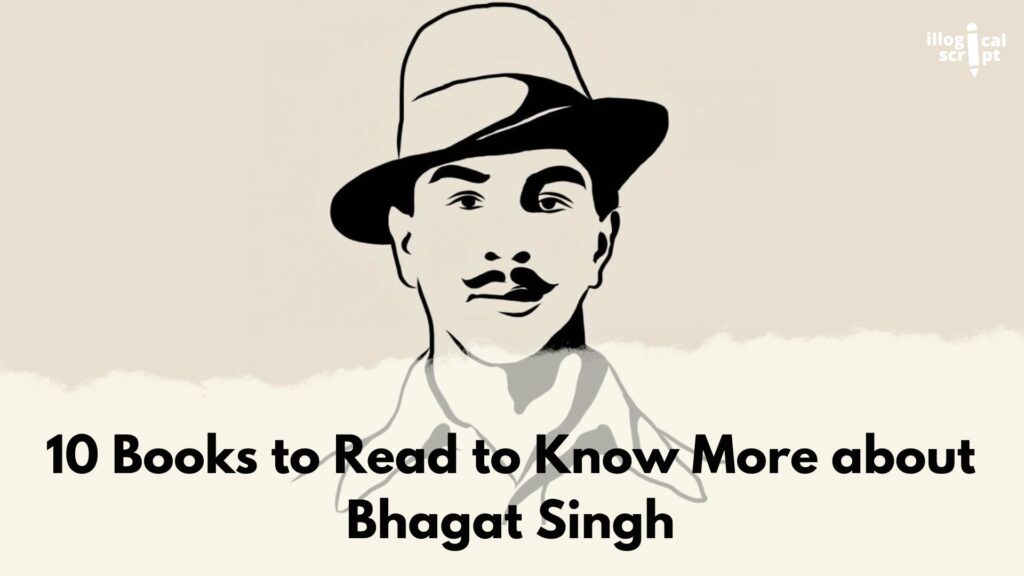Many historical events as we recall now, had the greatest influence upon the whole world. One such table-turning point in the history of the world was World War II. It was the most destructive human battle till date, lasting from 1939 to 1945, and the events that followed weren’t usual either. To depict all the real events, I’ve got a list of Non-Fiction World War 2nd Books that’ll brief you about everything you need to know about it.
I have been following it for two years, and undoubtedly history has been one of my favorite subjects. If you ask what’s my favorite part of world history, it has to be the era of World War II and after. It is one of the topics I care about the most as whatever things happened during this time have left such a mark on the world that can be seen today as well. It wouldn’t be wrong to say that to understand world politics today, you need to have vivid knowledge about the second world war, and for this, there’s no better way than reading some quality books.
The second world war was fought between the Allied forces and the Axis forces. The war was ongoing from both sides, but under the shadow of the war, Nazi Germany was also committing other horrors. From the commencement of the cold war to the breaching of the Berlin Wall to the disintegration of the USSR, the world saw way too much in that period, the repercussions of which can still be seen today.
Even if you know about the history of the war, there’s no way you know every aspect and angle of it. There are so many different sights and perspectives to view the story from and in this, and these books might help you get an inside view of the war situation. And for those who don’t know about it, what are you waiting for? Let’s get into it!
22 Non-Fiction Books About World War 2
The time of World War II was dark and ugly for the whole world. There were so many things going around in the world at that time that we don’t even know all of it. So I did some research and found these interesting books, I have listed below.
1. Engineers of Victory
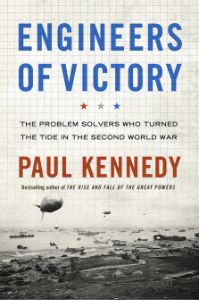
Full Title: Engineers of Victory: The Problem Solvers Who Turned the Tide in the Second World War
Author: Paul Kennedy
Genre: Non-Fiction
Publishing Date: 2013
Description:
The intimate accounts of the cavity magnetron, a tiny radar as small as a soup plate, and the Hedgehog, a multi-headed grenade launcher that helped the Allied forces to eliminate the danger to their armored vehicles crossing the Atlantic.
The vital choice by engineers to place a supercharged Rolls-Royce engine in the P-51 Mustang, creating a fighter jet more formidable than the Luftwaffe’s and the smart deployment of floating brigades are told in.
The author takes the readers behind the scenes, revealing how hundreds of separate Allied planes and combat ships were synchronized to pull off the Normandy operation and how crew chiefs honed the high-flying, inaccessible B-29 Superfortress that would drop the atomic bombs on Japan.
2. The Guns at Last Light
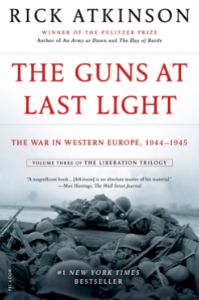
Full Title: The Guns at Last Light: The War in Western Europe, 1944-1945
Author: Rick Atkinson
Genre: Non-Fiction
Publishing Date: 2013
Description:
It is the unsurpassed tragedy of the twentieth century: the Allied Forces freed Europe and defeated Hitler at a catastrophic cost. D-Day marked the start of the final phase of the European war, and Atkinson’s gripping account of that daring gamble sets the tone for the masterful tale that follows.
The bloody battle in Normandy, the liberation of Paris, the calamity that was Operation Market Garden, the harrowing Battle of the Bulge, and eventually the thrust into the center of the Third Reich, all these events in history and more come to life with a variety of fresh material and a captivating supporting cast.
From presidents and generals to military conflict commanders and frightened teenage riflemen, Atkinson narrates the story from the point of view of players at all levels.
3. The Woman Who Smashed Codes

Full Title: The Woman Who Smashed Codes: A True Story of Love, Spies, and the Unlikely Heroine Who Outwitted America’s Enemies
Author: Jason Fagone
Genre: Non-Fiction
Publishing Date: 2017
Description:
The author of this book traces the life of this exceptional woman, who played a pivotal role in the history of our country for forty years. Following World War I, Smith used her skills to apprehend gangsters and traffickers during Rebellion, then undertook a secret mission to uncover and expose Nazi spy networks spreading rapidly across South America, edging nearer and nearer to the United States.
Elizebeth fought a top-secret war of wits against Hitler’s Reich during World War II, cracking multiple iterations of the Enigma code used by German agents. Meanwhile, William labored feverishly within an Army vault in Washington to crack Purple, the Japanese counterpart of Enigma, and did succeed, albeit at a terrible human price.
4. Spain in Our Hearts
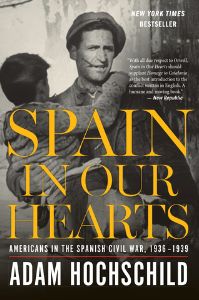
Full Title: Spain in Our Hearts: Americans in the Spanish Civil War, 1936-1939
Author: Adam Hochschild
Genre: Non-Fiction
Publishing Date: 2017
Description:
The Spanish Civil War became the battleground in a conflict between liberty and totalitarianism that would soon take on the world by means, as the world watched with bated breath for three years in the 1930s. Supporters flocked in to defend Spain’s democratic government, facing a right-wing revolt led by Francisco Franco and substantially backed by Hitler and Mussolini.
Nearly 3,000 Americans were among them, compelled by their convictions to help in a horrible struggle their country did not want to be a part of. Adam Hochschild’s book, Spain in Our Hearts, brings together the memories of a dozen foreigners to portray the war’s absolute horror and significance.
A blazing nineteen-year-old Kentucky woman on her honeymoon whose encounter in groundbreaking Barcelona has become the crowning achievement of her life. A pair of competing New York Times news anchors who encased the armed struggle from different sides, and a highly respected American couple on the front lines whose truly inspirational, terribly sad love story runs through in this consideration, are among them.
5. Rogue Heroes

Full Title: Rogue Heroes: The History of the SAS, Britain’s Secret Special Forces Unit That Sabotaged the Nazis and Changed the Nature of War
Author: Ben Macintyre
Genre: Non-Fiction
Publishing Date: 2016
Description:
David Stirling, a young, aimless nobleman whose early lack of direction belied a superb master strategist, was the brains behind Britain’s Special Air Service, or SAS. Whereas most of his comrades saw a prolonged conflict with Rommel’s desert forces on a tactical map of World War II’s African theatre, Stirling saw an opportunity.
With a small group of elite, well-trained men, he could drop behind enemy territory and wreck their planes and war materials. Stirling constructed a revolutionary fighting force, partnered with his moral counterpart, the disciplined martinet Jock Lewes, that would upend the war’s equilibrium and the essence of warfare itself.
Those who thought his techniques were undignified or outside the pale opposed him. Still, the SAS’s astonishing accomplishments against the Nazis in Africa and then on the Continent laid the groundwork for practically all special forces units that would precede.
6. Right Out of California

Full Title: Right Out of California: The 1930s and the Big Business Roots of Modern Conservatism
Author: Kathryn Olmsted
Genre: Non-Fiction
Publishing Date: 2010
Description:
This fundamental reconsideration of conservative ideology revisits the raging labor struggles in Depression-era California’s agricultural areas, the source of inspiration for a century of writers, artists and the catalyst for FDR’s New Deal intervention.
In a story that puts a ruthless generation of farmers against a passionate ensemble of activists, authors, and revolutionaries, noted historian Kathryn S.
7. Infamy
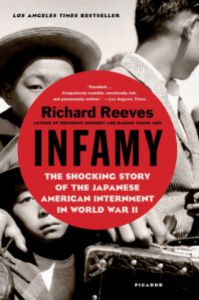
Full Title: Infamy: The Shocking Story of the Japanese-American Internment in World War II
Author: Richard Reeves
Genre: Non-Fiction
Publishing Date: 2015
Description:
President Roosevelt issued an executive order proclaiming sections of four western states a war zone under military authority just three months after Japan destroyed Pearl Harbor, inflaming the country. Thousands of Japanese-Americans were swiftly rounded up by the US Army, who were given as little as 24 hours to leave their homes and fields.
These war hysteria victims were confined in primitive camps for the duration of the war. Infamy tells the story of this heinous chapter in American history in a way that has never been told before. Richard Reeves, a renowned historian, has spoken to survivors, read several private correspondence and diaries, and delved through archives to develop a comprehensive account of the catastrophe.
Men we typically think of as heroes, FDR, Earl Warren, and Edward R. Murrow, were, in this case, criminals. Still, it is also heard about numerous Americans who risked their lives to protect the concentration camp prisoners’ rights. We hear the moving experiences of those who spent decades in war relocation camps, many of whom persevered in the face of terrible acts with extraordinary dignity.
8. Wild Bill Donovan
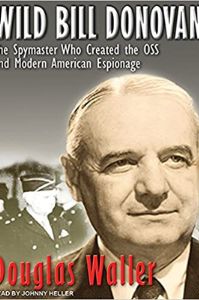
Full Title: Wild Bill Donovan: The Spymaster Who Created the OSS and Modern American Espionage
Author: Douglas C. Waller
Genre: Non-Fiction
Publishing Date: 2010
Description:
The stories of courageous young men and women in the OSS going behind enemy lines for disruption, stealing into Washington embassies to collect secrets, conspiring to depose Adolf Hitler, and enduring horrible torture or death when apprehended by the Gestapo are told in this action-packed spy novel. It’s also a story about palace intrigues, high-level political bickering, and powerful men opposed against each other.
He was one of America’s most intriguing and mysterious commanders, and he was the guy who served as Franklin D. Roosevelt’s top spy during WWII. Wild Bill Donovan was the director of the Office of Strategic Services, the country’s first national intelligence organization, and the father of today’s CIA, a mythological character whose impact is still hotly discussed. Donovan exposed the country to covert warfare on a grand scale it had not seen before.
Experienced reporter Douglas Waller has dug through government and private collections in the United States and England. Combed through hundreds of pages of recently released papers and interviewed dozens of Donovan’s relatives, colleagues, and acquaintances to produce a gripping portrait of one of the most important individuals in contemporary intelligence.
9. Man’s Search for Meaning
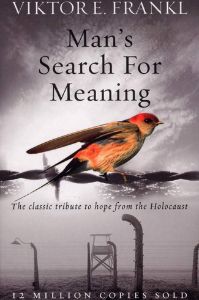
Full Title: Man’s Search for Meaning: The classic tribute to hope from the Holocaust
Author: Viktor E. Frankl
Genre: Non-Fiction
Publishing Date: 1946
Description:
Earlier in the war, Viktor Frankl was a well-known Viennese psychiatrist who was perfectly positioned to examine how he and other detainees dealt with the horrors of Auschwitz. He saw that the guys who consoled others and gave up their last bit of bread lived the longest, demonstrating that everything should be stripped away from us to select our mood in any given situation.
The prisoner’s personality was shaped by a given input rather than by camp factors alone. Only those who let their internal grip on their ethical and religious identities weaken finally succumbed to the camp’s devolving impact.
At the same time, those who converted their experiences into victories turned them into inner triumphs. Frankl came to feel that man’s fundamental longing is to find purpose and meaning in his life. This remarkable work shows us how to rise beyond sorrow and find meaning in life.
10. From Kraków to Berkeley
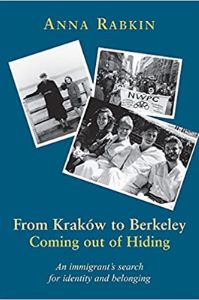
Full Title: From Kraków to Berkeley: Coming Out of Hiding
Author: Anna Rabkin
Genre: Non-Fiction
Publishing Date: 2018
Description:
The author’s idyllic upbringing in Krakow suddenly ended when her Jewish family was forced to flee the Soviets and Nazis during WWII. Only she and her brother were able to escape the Lviv ghetto. Anna was sent to England on a Kindertransport in 1946 when she encountered the befuddling world of British prep schools. She relocated to New York with the support of relatives, where she found her spouse.
After her honeymoon in Castro’s Cuba, they established a new life in Berkeley, California. Anna was drawn away from her duty as a remaining mom and into the tumultuous politics of Berkeley during the stormy 1960s. She was elected to public office in 1979, joining one of the country’s most liberal and fractious administrations.
From the Holocaust to the Cold War, from the Free Speech Movement to the Women’s Movement, from worldwide events to hyper-local political skirmishes, this is a human story affected by past events. Anna confronts the problems she faced with honesty and humor, including the plague of generally pro, the marital difficulties that a wife’s job may cause, and the spitefulness of election campaigns.
In the end, this is a narrative about healing and resiliency, about how acceptance and love gave her the courage to become a contributing member of society.
11. In the Garden of Beasts
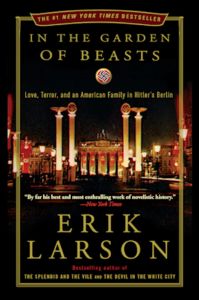
Full Title: In the Garden of Beasts: Love, Terror, and an American Family in Hitler’s Berlin
Author: Erik Larson
Genre: Non-Fiction
Publishing Date: 2011
Description:
Dodd, a mild-mannered Chicago professor, is accompanied by his spouse, son, and eccentric daughter, Martha. Martha is initially enthralled by the Third Reich’s parties and pageantry, as well as the gorgeous young men with their contagious passion for returning Germany to world significance.
She had one fling after another, notably with the surprisingly noble first chief of the Gestapo, Rudolf Diels, who was enamored of the “New Germany.” However, when proof of Jewish persecution grew as evidenced by a horrifying first-hand witness, her father expressed his worries to a mainly unconcerned State Department in the United States.
As Jews were assaulted, the media is restricted, and draughts of terrifying new legislation emerge, Dodd was alarmed. As the first year progressed and the shadows grew darker, the Dodds have days filled with pleasure, adventure, passion, and, eventually, the horror when Hitler’s real personality and relentless desire were revealed in a final spasm of death and brutality.
12. With The Old Breed
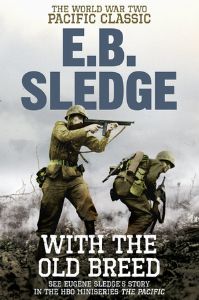
Full Title: With the Old Breed: At Peleliu and Okinawa
Author: Eugene Sledge
Genre: Non-Fiction
Publishing Date: 1981
Description:
The author, an Alabama youngster, schooled in American history and fond of such heroes as George Washington and Daniel Boone, joined the legendary 1st Marine Division, 3rd Battalion, and 5th Marines during the war. He was surprised to be pushed into the fight of Peleliu, in which the world was a horror of flashes, blasts, and cracking gunshots, despite his extensive training.
Hammer was a battle vet when he arrived in Okinawa’s nightmare, still terrified but not panicked. Based on notes Sledge maintained secretly in a version of the New Testament, the Old Breed described the process of a warrior in the brutal Pacific Theater with complete clarity and piercing honesty.
This is how his life was rescued, endangered, and changed. The tale of how he learned to torture and despised his fellow people and how he grew to appreciate him is also explained here.
13. A Spy at the Heart of the Third Reich
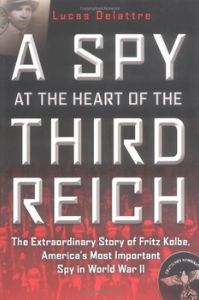
Full Title: A Spy at the Heart of the Third Reich: The Extraordinary Story of Fritz Kolbe, America’s Most Important Spy in World War II
Author: Lucas Delattre
Genre: Non-Fiction
Publishing Date: 2005
Description:
In 1943, a young German foreign ministry official approached Allen Dulles, an OSS officer stationed in Switzerland who’d later become the director of the Central Intelligence Agency. Fritz Kolbe was the guy who, after years of fighting Nazism, chose to betray his country.
While Dulles was initially suspicious, Kolbe’s information was so significant that he later conceded, “No individual ambassador overseas, of whichever position, could have gotten his hands on so much data like this man.”
He was one of my most important agents during World War II.” Lucas Delattre has created a piece of amazing study that moves at the speed of a Le Carré thriller, based on freshly released information from the US National Archives and Kolbe’s archives.
14. The Good War
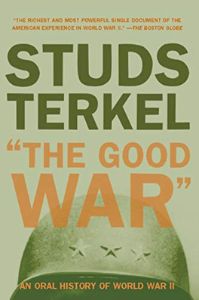
Full Title: The Good War: An Oral History of World War II
Author: Studs Terkel
Genre: Non-Fiction
Publishing Date: 1997
Description:
The Good War is a monument not only to the horrors of war but also to the author’s amazing ability as an interviewer and oral scholar. His subjects, ranging from a pipe fitter’s trainee at Pearl Harbor to a member of the airplane’s crew that detonated the atomic weapon on Nagasaki, are frank and unflinching in their assessments of themselves and their events, resulting in a magnificent epic chronicle of WWII.
The author’s scope was broadened in this collection to include the global and historical, and the outcome is a gem of the historical record.
15. Auschwitz and the Allies
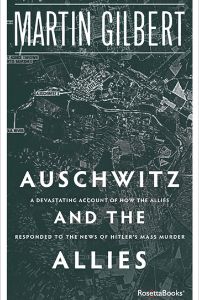
Full Title: Auschwitz and the Allies
Author: Martin Gilbert
Genre: Non-Fiction
Publishing Date: 1981
Description:
In 1942, Hitler declared that the outcome of the European war would be the utter extinction of the Jews, and he did so in front of a massive gathering in Berlin. The Allies were aware, but they did not pay attention.
Allied reconnaissance planes photographed Auschwitz several times in 1944 while looking for economic locations. The photos were regularly filed in governmental files and not inspected until 1979, seemingly disregarded by the Allies.
By 1944, two escaping Auschwitz prisoners had brought eyewitness accounts of the atrocities of the extermination camps to the West. Their testimony, as well as that of succeeding escapees, was disregarded.
Even though Churchill had authorized feasibility analysis for air strikes on Auschwitz the previous year, the RAF not only did little but later transferred the burden to the Americans, who did nothing as well. The causes for this are explained in this book.
16. Hiroshima

Full Title: Hiroshima
Author: John Hersey
Genre: Non-Fiction
Publishing Date:1946
Description:
This moving and well-observed picture of six people who survived Hiroshima’s nuclear blast sparked an outpouring of emotion. It was the magazine’s first and only time devoting an entire problem to a single piece.
Radio stations paused their usual coverage to transmit renditions of the entire manuscript, which sold out in hours. Americans heard the first detailed description of the horrors of nuclear warfare more than a year after the Japanese city was obliterated.
According to Hersey, the silhouettes of vaporized citizens and soldiers whose eyes were melted by the atomic explosion were indelibly engraved on stone facades. Hiroshima was widely regarded as one of the earliest forms of New Journalism, and it had a significant impact on the discussion over nuclear weapons and the recovery period between the United States and Japan.
17. Guadalcanal Diary
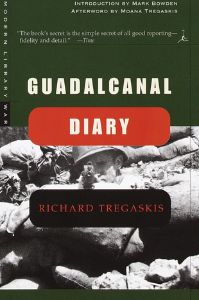
Full Title: Guadalcanal Diary
Author: Richard Tregaskis
Genre: Non-Fiction
Publishing Date: 1943
Description:
On 7th August 1942, Allied forces, mostly US Marines, landed on the southwestern Pacific islands of Tulagi and Guadalcanal to fight off the approaching Japanese army. The joint air, land, and sea attack was the first of the type in the Pacific theatre, and it was the Allies’ first significant campaign against the Japanese empire.
Richard Tregaskis, a volunteer battle correspondent, was one of only two reporters who observed the attack. Tregaskis recalls the traumatic events of the young soldiers who rendered the mission a victory in this remarkable piece of combat journalism.
18. Maus
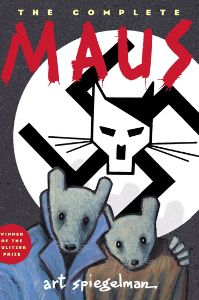
Full Title: Maus
Author: Art Spiegelman
Genre: Non-Fiction
Publishing Date: 1980
Description:
Maus portrays the narrative of Vladek Spiegelman, a Holocaust survivor, and his son, a cartoonist trying to come to grips with his father’s story. Vladek’s tragic story of existence is weaved with the author’s narrative of his tortuous connection with his aged father, approaching the unthinkable through the smallest.
They staged a typical life of little fights and unhappy visits against the background of guilt brought on by preservation, analyzing the gory claw marks of history and following its significance for those who come after them.
19. Hitler (1936–1945)
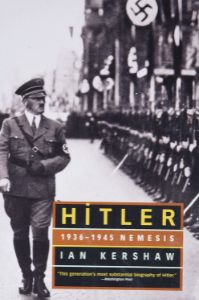
Full Title: Hitler, 1936–1945: Nemesis
Author: Ian Kershaw
Genre: Non-Fiction
Publishing Date: 1980
Description:
This book accomplishes one of the good contemporary biographies. More than any other individual in twentieth-century history, Adolf Hitler deserves a deep biographical study, and no era is more vital than the Second World War.
Beginning with Hitler’s unexpected European victories following the Rhineland invasion and finishing nine years later with Hitler’s death in a Berlin bunker, the author gives us a new understanding of Hitler’s purpose and influence.
He discusses the essential issues of Nazi radicalism’s peculiar characteristics, the Atrocities, and the toxic European world that permitted Hitler to function successfully.
20. The Unwomanly Face of War
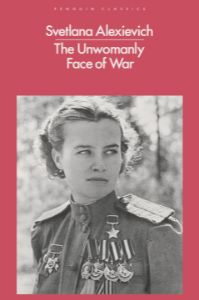
Full Title: The Unwomanly Face of War: An Oral History of Women in World War II
Author: Svetlana Alexievich
Genre: Non-Fiction
Publishing Date: 1985
Description:
The story of war is rarely presented from the perspective of a woman. Despite this, a million women battled for the Red Army throughout WWII. In their own words, this author tells their stories. For several years in the 1970s and 1980s, the author interacted with thousands of old Soviet female combatants, including shooters, pilots, squaddies, moms, and wives.
She documents the experiences of Soviet women who fought on the front lines, at home, and in occupied countries. They fought alongside men, yet their contributions and sufferings were disregarded after the triumph.
21. First Light

Full Title: First Light: The Story of the Boy Who Became a Man in the War-Torn Skies Above Britain
Author: Geoffrey Wellum
Genre: Non-Fiction
Publishing Date: 2002
Description:
At 17, the author was enlisted in the Royal Air Force. He was physically and psychologically tired at the age of twenty–two after operating Spitfires during the Battle of Britain and flying over 100 sorties over occupied France. He now reconstructs his combat memories using notes he took at the time.
The novel realistically depicts the hardships of WWII aviation, including companionship, unscramble, duels, long flights, and bad weather. But it also paints a touching portrayal of a young man who laments the loss of comrades during preparation and broods over worries of failure. It perseveres to become a fighting champion, subjected to mortality but never immune to it.
22. Churchill

Full Title: Churchill: Walking with Destiny
Author: Andrew Roberts
Genre: Non-Fiction
Publishing Date: 2018
Description:
When we think of exceptional leaders with unwavering bravery, we think of Winston Churchill, the famous, visionary war leader. He refused to be swayed by popular opinion and remained strong in his convictions even though everyone else did.
But how Winston became Churchill as a young man and what gave him the courage to stand up to Nazi Germany’s superior power while bombs rained down on London and so many others had surrendered is shown in this book.
The author delivers readers the complete and ultimate Winston Churchill in Churchill, from birth to legacy, in a book that is both emotionally intimate and obsessively fascinating.
Conclusion
Well, what do you think? Wasn’t it interesting? I loved these books so much. These books just touched my heart, and I got several significant lessons and understandings to take away from them. So many great personalities, victims, and survivors have shared their experiences in different books, and reading them is a matter of huge luck and pleasure.
I don’t have enough words to appreciate these masterpieces, and I would strongly recommend you all to read these books at least once.
Also, I recommend checking out these books mentioned below:
